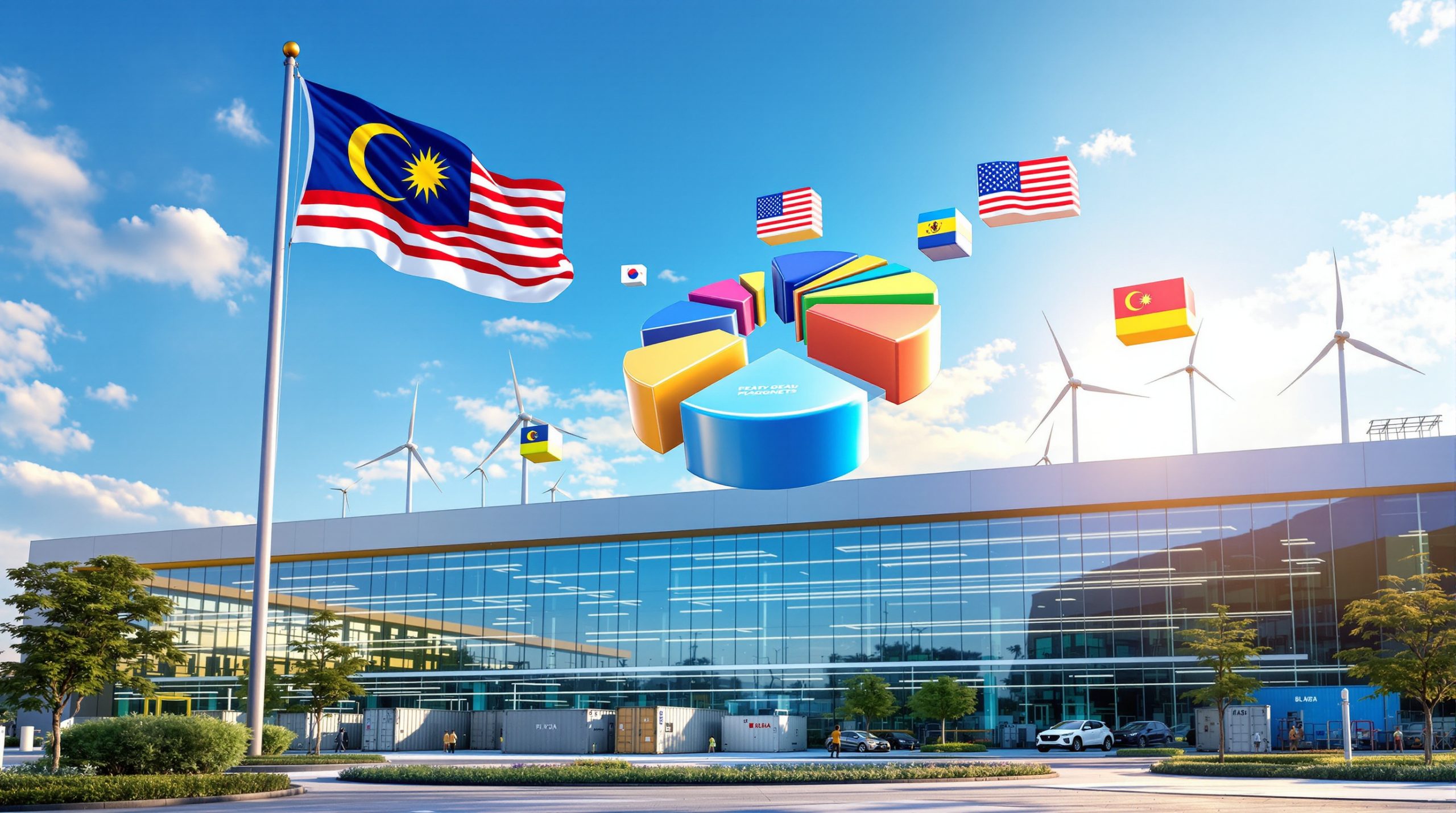The G7 Critical Minerals Initiative represents a transformative approach to addressing unprecedented supply chain vulnerabilities that have emerged across seventeen strategic materials essential for modern economies. Recent disruptions have exposed dangerous concentrations of processing capacity, with China controlling approximately 85-90% of rare earth element separation according to U.S. Geological Survey data. Furthermore, this dominance extends across multiple critical materials, including roughly 70% of cobalt refining capacity and 60% of lithium hydroxide conversion facilities.
Such concentration creates systemic vulnerabilities that transcend individual national interests. When supply disruptions occur, cascading effects ripple through industries ranging from renewable energy manufacturing to defense systems production. Consequently, the recognition that resource security has become a collective challenge requiring multilateral solutions has driven unprecedented cooperation among traditionally competitive economies.
The initiative represents more than diplomatic coordination. It acknowledges that resource-rich nations require substantial support to develop extraction and processing capabilities that can compete with established supply chains. Mark Selby's observation that governments recognise the need to work together rather than simply requesting minerals without supporting development costs highlights the fundamental shift in resource diplomacy.
Addressing Supply Chain Vulnerabilities Through Coordinated Action
Contemporary mineral security strategies must balance immediate supply risks with long-term resilience building. The coordinated approach emerging among major economies focuses on diversification through both geographic sourcing and technological advancement. This dual strategy addresses current dependencies while creating alternative pathways that reduce future vulnerability.
Diversification Through Strategic Partnerships
Reducing single-source dependencies requires more than identifying alternative suppliers. It demands creating economic incentives for new capacity development while establishing frameworks that ensure reliable, long-term supply relationships. Joint venture structures enable risk sharing across multiple projects, making previously uneconomical developments viable through shared investment burdens.
Technology transfer agreements accelerate capability development by sharing expertise rather than requiring each nation to develop processing knowledge independently. These arrangements create mutual dependencies that strengthen supply relationships while building technical capacity in partner nations. In addition, parallel developments such as the European CRM facility demonstrate how regional initiatives complement global coordination efforts.
Strategic reserve coordination prevents supply disruption cascades by ensuring buffer stocks exist across multiple locations rather than concentrated in single facilities. Emergency allocation protocols establish predetermined distribution mechanisms that can activate rapidly during supply crises, reducing the impact of temporary disruptions on critical industries. Moreover, Australia's critical minerals reserve strategy exemplifies how individual nations can align their strategic reserves with multilateral objectives.
Standards-Based Market Development
The integration of environmental protection, labour rights, and community consultation requirements into supply chain standards creates competitive advantages for compliant producers. These standards serve dual purposes: ensuring sustainable development practices while raising barriers for non-compliant suppliers who may use lower-cost but environmentally or socially damaging extraction methods.
Implementation requires careful sequencing to avoid market disruptions. Pilot programmes with select mining operations allow standards refinement before full-scale deployment, while mandatory compliance phases provide time for existing operations to adapt their practices. However, this approach must balance effectiveness with practical implementation timelines.
Priority Materials and Supply Risk Assessment
The selection of seventeen critical materials for priority attention reflects comprehensive analysis of supply risks, strategic importance, and substitution possibilities. This prioritisation enables focused resource allocation while addressing the most vulnerable supply chains first.
Tier 1 Critical Dependencies
Lithium's strategic importance stems from its essential role in battery manufacturing, where no viable large-scale alternatives exist for high-energy-density applications. Current import dependencies approach 89% for many developed nations, with processing concentrated in China despite raw material sources being more geographically distributed. Consequently, lithium refinery developments in alternative locations become strategically crucial.
Rare earth elements present the highest supply risk due to processing complexity and environmental challenges. The 95% import dependency reflects not just raw material sourcing but the technical difficulty of establishing alternative processing facilities that can match existing capacity and quality standards.
Cobalt's 76% import dependency combines geographic concentration in politically unstable regions with processing concentration in single nations. The material's essential role in battery cathodes and superalloys makes supply disruptions particularly costly for multiple industries simultaneously.
Graphite's 82% import dependency reflects the dominance of Chinese flake graphite production and the technical challenges of establishing synthetic graphite alternatives at competitive costs. Battery anode applications require specific graphite grades that limit substitution possibilities in the near term.
Secondary Priority Materials
Nickel, copper, manganese, and platinum group metals represent moderate risk categories where supply disruptions would impact manufacturing but alternative sources exist within allied nations. These materials often have longer development lead times but face fewer technical barriers to diversification.
The risk assessments consider both immediate supply vulnerabilities and longer-term demand growth projections. Materials supporting clean energy transitions receive elevated priority due to expected demand increases that could strain existing supply chains even without deliberate restrictions.
Financial Architecture for Resource Development
Addressing capital intensity challenges in mining development requires innovative financing mechanisms that share risks while providing patient capital for long-term projects. Traditional project finance structures often prove inadequate for strategic mineral development due to commodity price volatility and extended payback periods.
Multilateral Development Finance
The establishment of coordinated funding vehicles represents recognition that individual national resources prove insufficient for the scale of development required. Combining contributions from multiple developed nations creates capital pools that can support large-scale projects while distributing risks across multiple sovereigns.
Fifteen-year loan terms address the mismatch between mining project lifecycles and traditional commercial financing timeframes. Below-market rates compensate for strategic benefits that extend beyond commercial returns, while equity participation options enable governments to benefit from successful developments.
Revenue sharing agreements provide additional flexibility by tying government returns to actual material delivery rather than purely financial metrics. This structure aligns government incentives with strategic supply objectives rather than just investment returns.
Government Procurement Guarantees
Long-term purchasing commitments provide revenue certainty that enables project financing by reducing market risk for both debt and equity investors. Guarantee terms spanning 10-15 years address the timeline mismatch between mining development and market demand visibility.
Pricing formulas tied to international benchmarks plus sustainability premiums create incentives for responsible production practices while ensuring competitive pricing relative to alternative sources. These premiums compensate for higher production costs associated with environmental and social compliance.
Industry Response to Strategic Material Initiatives
Mining companies are restructuring development strategies to align with evolving government priorities and access preferential financing. This realignment creates opportunities for companies positioned in favourable jurisdictions with appropriate operational practices, while potentially disadvantaging those in non-aligned regions or with substandard practices.
Qualification Criteria and Compliance Requirements
Environmental standards requiring carbon footprint reductions of 30% below industry averages reflect recognition that strategic minerals must contribute to rather than undermine climate objectives. Current industry baselines vary significantly by deposit type and energy sources, with nickel mining ranging from 5-8 tonnes CO₂ per tonne of nickel produced.
Water usage minimisation becomes critical in regions facing water scarcity, where mining operations must demonstrate net-positive water impacts through recycling and treatment innovations. Biodiversity impact mitigation requires comprehensive environmental assessments and restoration commitments that extend beyond traditional reclamation requirements.
Social licence requirements emphasise meaningful community participation rather than superficial consultation. Indigenous community consultation and benefit-sharing agreements recognise historical grievances while creating economic opportunities that extend beyond direct employment.
Economic Viability and Scale Requirements
Demonstrated reserves supporting minimum 15-year mine life ensure projects can provide sustained supply rather than short-term production bursts. Processing capacity sufficient for domestic value-addition reduces dependence on offshore processing while creating additional economic benefits.
Transportation infrastructure requirements often represent major capital investments that governments may need to support through coordinated infrastructure development programmes. Efficient export logistics become essential for projects serving international markets while maintaining cost competitiveness.
Financial capacity for sustained operations through commodity cycles addresses the historical challenge of mining operations suspending production during price downturns, which undermines strategic supply reliability.
Canadian Implementation Framework
Canada's National Priority Projects framework demonstrates practical application of strategic material priorities through specific selection criteria and support mechanisms. The requirement for projects generating minimum $1 billion annual economic impact ensures focus on developments that can meaningfully contribute to national economic objectives.
Seven-year timelines for first production reflect urgency in addressing supply vulnerabilities while remaining realistic about development requirements. Projects with longer development timelines may receive support but lower priority in resource allocation decisions.
Indigenous participation requirements through meaningful ownership or benefit-sharing arrangements address historical grievances while creating sustainable economic partnerships. These arrangements often provide social licence advantages that can accelerate permitting and development processes.
Net-positive climate impact requirements ensure strategic material development contributes to rather than undermines broader climate objectives. This criteria favours projects that can demonstrate lifecycle carbon benefits through displacing higher-emission alternative sources.
Innovation and Technology Advancement
Technology development receives priority recognition due to its potential for transformational impact on supply security, environmental performance, and economic competitiveness. Innovation investments target breakthrough technologies that can reduce material requirements, improve extraction efficiency, or enable alternative supply sources.
Advanced Processing Technologies
Direct lithium extraction methods offer potential water consumption reductions of 70-85% compared to traditional evaporation pond approaches. While some companies claim 90% reductions, realistic assessments suggest more modest improvements that still represent significant environmental benefits.
Traditional evaporation methods require 500,000+ gallons per tonne of lithium extracted, while DLE approaches can reduce requirements to 50,000-100,000 gallons per tonne. These improvements become critical in water-scarce regions where traditional extraction methods prove unsustainable.
Rare earth separation process improvements focus on reducing rather than eliminating chemical requirements. Current processes require hydrochloric acid, sulfuric acid, and toxic solvents that create environmental challenges. Alternative processes under development include ionic liquid extraction and supercritical fluid processes that reduce chemical intensity.
In-situ recovery techniques minimise surface disruption but have limited applicability to hard rock deposits. These methods work effectively for uranium, potash, and some solution-based mineral extraction but cannot replace conventional mining for lithium, cobalt, or rare earth deposits.
AI-optimised extraction represents emerging technology with applications in geological modelling, processing optimisation, and mine planning efficiency. However, significant deployment remains 3-5 years away, and benefits will be incremental rather than transformational in most applications.
Recycling and Circular Economy Development
Secondary material recovery represents the fastest pathway to supply independence, with current recycling rates below 5% for most critical materials creating enormous growth opportunities. The recent battery recycling breakthrough demonstrates how technological advances can dramatically improve recovery rates and processing efficiency.
Battery recycling capacity targeting 2 million tonnes annually by 2030 would represent roughly 4x growth from current levels of approximately 500,000 tonnes annually. Electronic waste processing targeting 15 million tonnes annually would represent approximately 24% recovery of global e-waste generation.
Rare earth recovery targeting 50,000 tonnes annually would represent 10x growth from current recycling levels below 5,000 tonnes yearly. This ambitious target requires breakthrough technologies for efficient separation from complex waste streams.
Platinum group metals recovery targets appear conservative given current recycling rates approaching 70% for industrial applications. The 200 tonnes annually target may underestimate potential given automotive catalyst recycling success.
Substitution Research and Development
Long-term security requires reducing dependence on scarce materials through alternative technologies that can provide similar performance characteristics. Sodium-ion batteries for grid storage applications have reached pilot commercialisation phase with multiple companies advancing toward full-scale production.
Iron-based magnets for wind turbine generators face technical limitations due to insufficient magnetic strength for high-performance applications. While research continues, these alternatives cannot fully replace rare earth permanent magnets in demanding applications.
Silicon nanowires replacing graphite in battery anodes show promise in laboratory settings but require manufacturing scale-up and cost reduction to achieve commercial viability. These alternatives could reduce dependence on natural graphite while potentially improving battery performance.
Geopolitical Dimensions and Market Dynamics
The G7 Critical Minerals Initiative addresses concentrated supply control through market-based mechanisms that avoid direct confrontation while leveraging collective economic power. This approach maintains World Trade Organisation compliance while creating powerful incentives for responsible production practices.
Market Access and Partnership Development
Coordinated restrictions on materials sourced through forced labour, environmental destruction, or market manipulation create economic consequences for non-compliant producers. These restrictions must balance effectiveness with trade law compliance to avoid retaliatory measures. For instance, the G7 roadmap to promote standards-based markets for critical minerals outlines specific frameworks for implementing these restrictions while maintaining WTO compliance.
Alternative partnership development actively cultivates relationships with mineral-rich developing nations through technology transfer, infrastructure investment, and capacity building programmes. These partnerships offer alternatives to existing supply arrangements while supporting sustainable development objectives.
Latin American lithium triangle development with Chile, Argentina, and Bolivia represents priority partnership opportunities given resource endowments and geographic proximity to major markets. African cobalt and rare earth projects offer diversification from current supply sources while supporting economic development.
Southeast Asian nickel and tin operations in Indonesia and Malaysia provide alternative supply sources with existing infrastructure and established mining sectors. Furthermore, Australia and Canada's strengthened partnership demonstrates how bilateral cooperation can complement multilateral initiatives by leveraging existing mining expertise and stable political relationships.
Economic Impact Projections and Benefits
Economic modelling suggests substantial GDP benefits from secure material supplies enabling manufacturing sector growth. Direct job creation in mining and processing represents only a fraction of total economic impact, with manufacturing expansion generating significantly more employment opportunities.
Mining and processing job creation projections of 500,000 direct positions reflect the scale of capacity building required to achieve supply security objectives. Manufacturing expansion generating 2.1 million indirect jobs demonstrates the multiplier effects of secure material access.
Research and development employment of 150,000 specialised positions reflects the innovation requirements for breakthrough technologies and alternative approaches. Infrastructure construction generating 800,000 temporary positions acknowledges the supporting investments required for mining development.
Private capital mobilisation of $400 billion over 10 years requires government policies that reduce investment risks while maintaining commercial viability. Government infrastructure spending and research funding provide complementary support that enables private investment flows.
Implementation Challenges and Risk Factors
Comprehensive planning cannot eliminate all risks to initiative success, with several factors potentially limiting effectiveness or creating unintended consequences. Understanding these challenges enables proactive mitigation strategies and realistic expectation setting.
Coordination and Implementation Difficulties
Coordinating policies across sovereign nations with different regulatory frameworks presents substantial operational challenges. Historical multilateral initiatives often suffer from lowest common denominator compromises that reduce effectiveness below optimal levels.
Free rider problems emerge when some members benefit from collective action without contributing proportionally to costs or commitments. These imbalances can undermine initiative sustainability and create tensions between participating nations.
Bureaucratic delays in decision-making and implementation can reduce initiative responsiveness to changing market conditions or emerging challenges. Political changes alter national priorities and commitments, potentially disrupting long-term strategy implementation.
Market Disruption and Transition Risks
Rapid supply chain restructuring creates temporary vulnerabilities during capacity building phases. Supply gaps between traditional source disruption and alternative source availability can damage industries the initiative aims to protect.
Cost increases from premium pricing for certified materials may create competitive disadvantages for manufacturers in participating nations relative to companies using non-certified supply chains. Investment uncertainty from changing regulatory requirements can delay project development and capacity building.
International Relations and Partnership Risks
Initiative success depends on cooperation from mineral-rich developing nations that may view coordinated action as economic coercion rather than partnership opportunity. Resource nationalism policies restricting exports represent potential responses that could undermine supply diversification efforts.
Alternative partnership development with non-participating nations could reduce the leverage and effectiveness of coordinated approaches. Price manipulation to extract maximum value from scarce resources remains possible during transition periods.
Political instability in key producing regions creates risks independent of partnership frameworks, requiring robust risk assessment and mitigation strategies for each geographic region and project.
Investment Positioning and Strategic Opportunities
The evolving framework creates distinct investment themes with different risk-return profiles and development timelines. Understanding these dynamics enables strategic positioning across the critical minerals value chain while managing risks associated with policy changes and market evolution.
Direct Mining Investment Categories
Established producers in favourable nations with expansion potential represent lower-risk opportunities that can benefit from preferential financing and expedited permitting. These companies often have existing relationships with government agencies and established social licences that reduce development risks.
Advanced development projects meeting qualification criteria offer higher return potential but require careful evaluation of technical, political, and financing risks. Companies with breakthrough processing innovations may command premium valuations but face technology deployment risks.
Recycling infrastructure developers with scalable business models benefit from growing waste streams and regulatory support for circular economy approaches. These opportunities often have shorter development timelines and more predictable revenue streams than traditional mining projects.
Infrastructure and Supporting Investments
Transportation networks connecting mines to processing facilities represent steady return opportunities as initiative scaling creates demand for efficient logistics. Power generation for energy-intensive processing operations benefits from growing capacity requirements and long-term supply contracts.
Water management systems for sustainable mining operations become increasingly valuable as environmental standards tighten and water scarcity concerns grow. Digital technologies optimising extraction and processing efficiency offer scalable returns across multiple operations.
Portfolio Construction Principles
Geographic diversification across multiple favourable nations and partner countries reduces political and regulatory risks while capturing opportunities in different development stages. Value chain coverage from upstream mining through downstream manufacturing captures full initiative benefits while providing hedging across different market segments.
Timeline matching aligns investment horizons with project development phases, recognising that mining projects typically require 5-10 years from discovery to production. ESG integration prioritises investments meeting evolving sustainability standards while avoiding stranded asset risks from changing requirements.
Success Metrics and Long-Term Objectives
Measuring initiative success requires both quantitative indicators and qualitative transformation goals that capture broader economic, environmental, and geopolitical benefits extending beyond simple supply security metrics.
Supply Security and Market Stability
Reducing single-source dependencies below 50% for priority materials by 2030 represents achievable but ambitious targets given current concentration levels. Achieving 25% of requirements through recycling by 2035 requires substantial infrastructure development but offers the fastest path to supply independence.
Strategic reserves covering 90 days of consumption provide buffer capacity for temporary disruptions while enabling more flexible response to supply chain challenges. Maintaining price volatility below 20% annually creates market stability that enables long-term planning and investment decisions.
Economic Development and Innovation Outcomes
Generating $300 billion cumulative GDP impact reflects the scale of economic transformation possible through secure material access and related manufacturing expansion. Creating 3.5 million direct and indirect jobs demonstrates the employment potential beyond traditional mining sector boundaries.
Achieving 15% annual growth in clean technology manufacturing capacity enables participation in rapidly growing markets while reducing dependence on imports. Establishing market leadership in breakthrough processing technologies creates competitive advantages that extend beyond resource access alone.
Transformation and Stability Goals
Market stability through diversified supply sources and strategic reserves reduces resource-based conflicts while enabling abundance-based cooperation rather than scarcity-driven competition. Innovation acceleration driving down material requirements and costs benefits all market participants while reducing supply pressures.
Sustainable development in producing regions through responsible mining practices creates positive examples that can influence broader industry standards. Geopolitical stability reduces resource-based tensions while creating frameworks for addressing future supply challenges collaboratively.
The G7 Critical Minerals Initiative ultimately represents a fundamental shift from reactive crisis management to proactive supply chain architecture that can adapt to changing circumstances while maintaining strategic material access essential for economic prosperity and national security objectives.
Want to Capitalise on Critical Minerals Investment Opportunities?
Discovery Alert's proprietary Discovery IQ model delivers instant notifications on significant ASX mineral discoveries, including critical materials like lithium, cobalt, and rare earth elements that are driving global supply chain transformations. With major economies investing hundreds of billions in supply security initiatives, subscribers receive actionable insights on mining discoveries that could benefit from this unprecedented strategic focus, positioning themselves ahead of the broader market through immediate alerts and comprehensive analysis.




